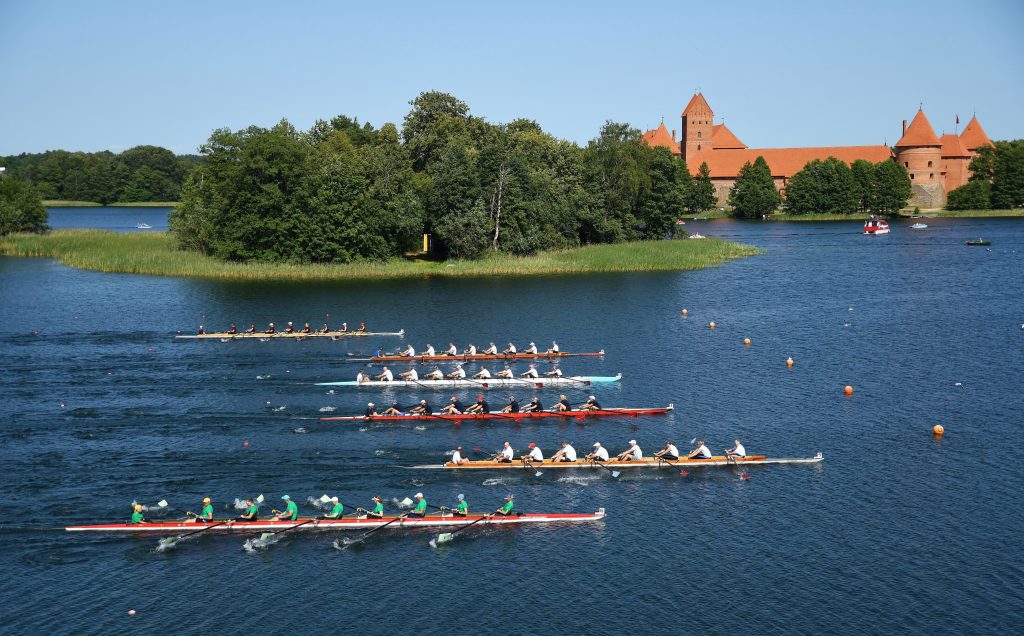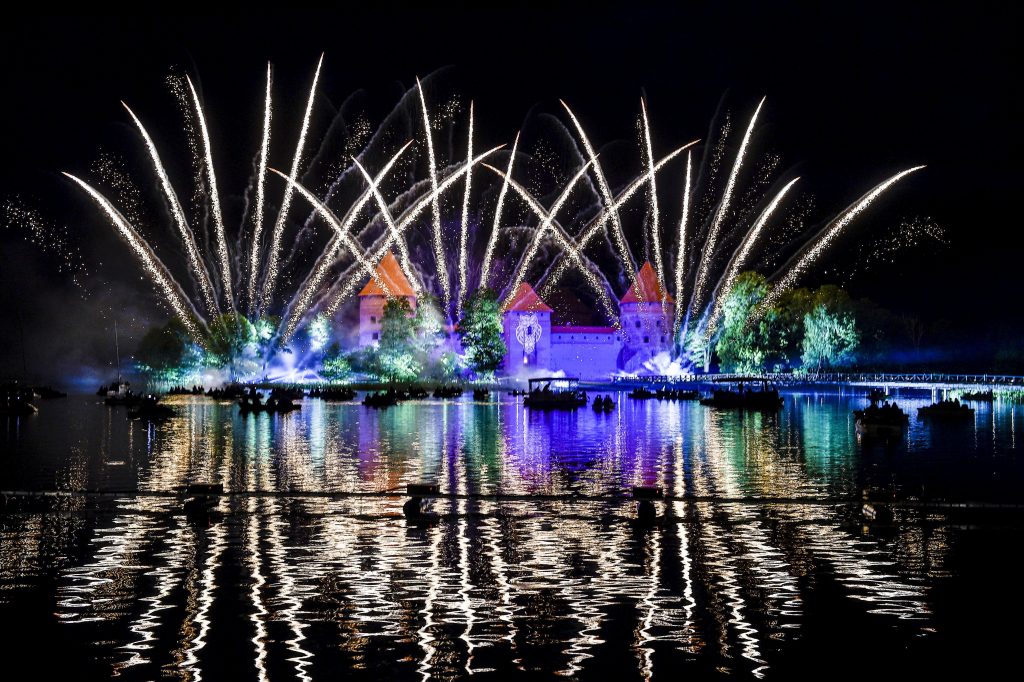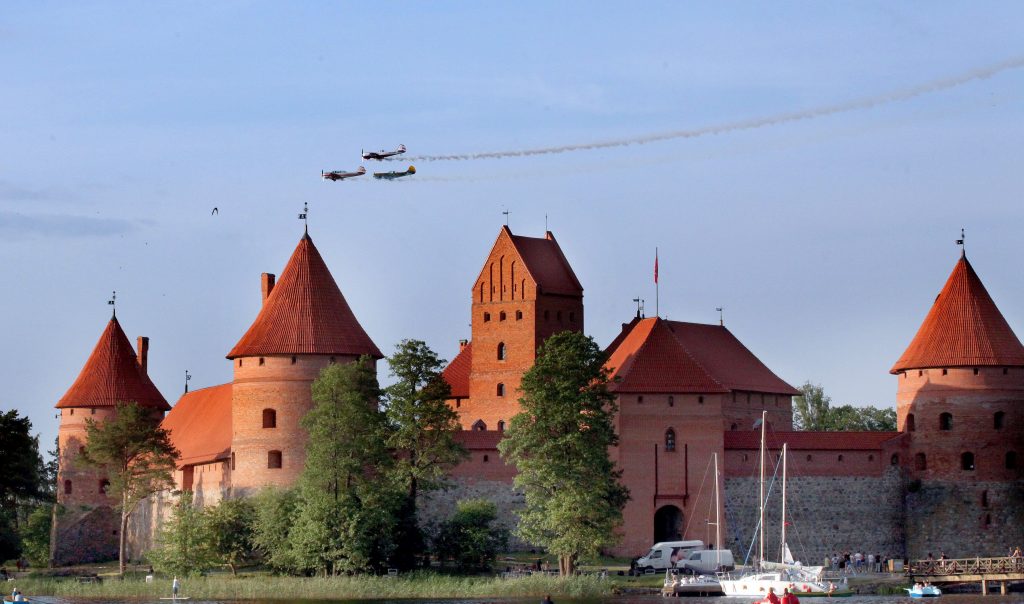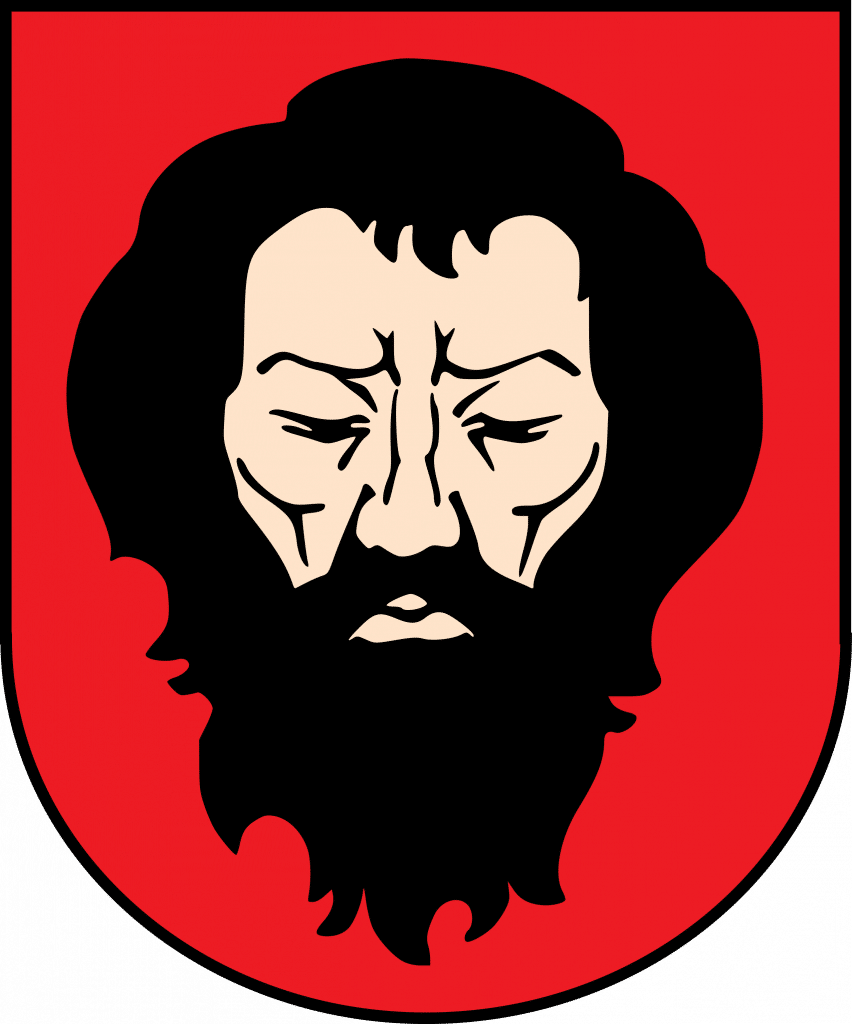
State:
Lithuania
District:
Vilnius
Coordinates:
54° 39′ N, 24° 56′ O
Altitude:
155 m a.s.l.
Area (town):
11.52 km²
Inhabitants (town):
4.298 (2018)
Population density:
373 inhabitants/km²
Trakai
Geography
Trakai is a popular tourist town 26 km west of the Lithuanian capital Vilnius. The town is surrounded by picturesque surroundings with 200 lakes. The town is situated on the waterfront on the peninsula between the lakes Galvė, Luka (Bernardinai) and Totoriškė. The most famous of them is Galvė, on whose island there is a medieval castle, the former residence of the Lithuanian Grand Princes. Trakai is the historical capital of Lithuania, where representatives of other nations have long lived alongside Lithuanians – Poles, Russians, Karaites, Tatars, Jews, Germans. The city is famous for the harmonious coexistence of different national and religious communities. The smallest Karaite nation of Turkish origin living in Lithuania occupies a special place in the history of the city and the whole country. There are only about 250 representatives of this nation in Lithuania, and Trakai is still the cultural and religious centre of this group. Now about 34,000 people live in the Trakai district municipality, 5,000 people directly in Trakai. There are eight so-called elderships in the district municipality. Up to 80 percent of all guests arriving in Lithuania visit Trakai every year.
History
The history of Trakai begins in Old Trakai, a small village three kilometres from present-day Trakai. According to legend, Old Trakai originated in the 14th century, it was founded by the Lithuanian Grand Duke Gediminas in the early 19th century. Around 1350, the most famous Lithuanian ruler of the Middle Ages, the Lithuanian Grand Duke Vytautas, was born in the family of Duke Kęstutis and his wife Birutė. The City of Lakes and Vytautas the Great – the so-called Trakai, which boasts not only the pride of this city, but of Lithuania as a whole – is the only castle in Eastern Europe built on the island. However, the castle built earlier is located on the peninsula. The Flemish knight Ghillbert de Lanois (1413-1414) described Trakai Castle in his travelogues as follows: “The old castle stands on the other side of the lake in an open square. The second castle stands in the middle of another lake, within cannon shot of the old one. It is brand new, built of French brick.” Currently, Trakai Island Castle is the most photographed subject in Lithuania. Under Vytautas, Trakai was a political and administrative centre. Castles were completed and a Catholic church was built. The town had two separate parishes. In the 16th century Trakai lost its political importance and declined economically. During the war with Russia (17th century), the town was looted, burnt down and the castles destroyed. In the second half of the 20th century the castle was rebuilt. Since 1962 there has been a history museum in the castle palace. The current municipality of Trakai has existed since 1995. The 700th anniversary of Trakai will be celebrated on 8 September 2022.
Politics
The current Trakai District Municipal Council was elected for a four-year term in the elections on 3 March 2019. The council consists of 25 members, including the mayor. It includes 9 representatives of the Liberal Movements of the Republic of Lithuania (LRLS), 4 of the Lithuanian Social Democratic Party (LSDP), 4 of the Lithuanian Polish Electoral Campaign-Christian Family Union (LLRA-CIS), 2 of the Lithuanian Peasants and Greens Union (LVL), 3 of the Public Election Committee “I choose the future, “, 3 representatives of the Patriotic Union-Lithuanian Christian Democrats (TS-LKD). The councillors decide on relevant municipal operational issues in the committees for budget and finance, economy, tourism and investment, health and social affairs, education, culture, sports and youth. The mayor of the municipality is Andrius Šatevičius, who represents the LRLS. He has been in office since 17 November 2021.
Culture and tourism
Trakai combines cultural heritage and natural landscape in an exceptionally harmonious way. About twelve years ago, Trakai was under discussion as a UNESCO World Heritage Site. A decision has not yet been made. It is assumed that precisely because of the uniquely preserved landscape, the process can be reopened.
The city is very interesting for those interested in religious history. The image of “Our Lady of Trakai” in the Basilica of the Visitation is famous for its miracles. The restored chapel of the Dominican monastery houses an exhibition of sacred art. And a pilgrimage route leads through Trakai.
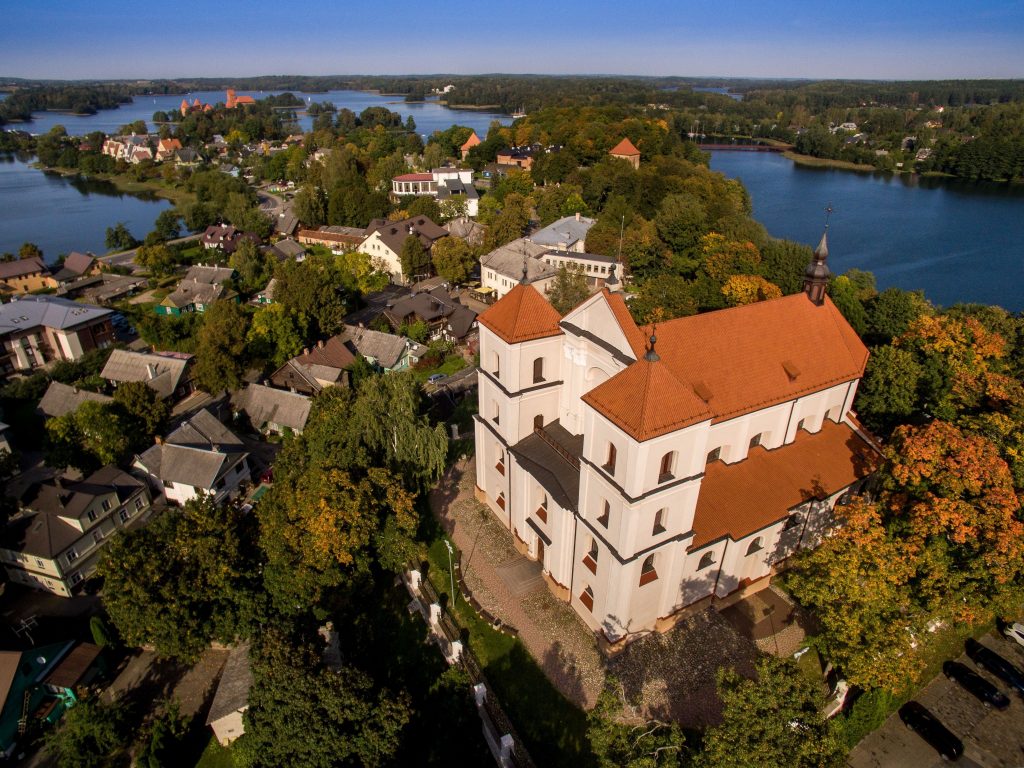
Guests in Trakai are amazed and fascinated by the authentic nature. Walks along the lakeshore are romantic and spectacular. Those who like more active leisure can choose between boat trips, steamboats, yachts, lake swimming, fishing and cycling. Trakai is also considered the capital of rowing, as Lake Galvė is equipped with a modern rowing course where World and European Rowing Championships and international regattas are held. Trakai is home to the only rowing museum in Lithuania.
The ensemble of the Užutrakis Manor near Trakai, also called the “little Versailles”, also attracts special attention. It is a public cultural centre with an exceptional view of the island castle on Lake Galvė. The manor park, considered one of the most valuable historical parks in Lithuania, was designed by the famous French landscape architect and botanist Édouard François André. Conferences, music festivals, concerts, art exhibitions are held in the palace and other rooms of the manor.
An exceptional place is the Hill of Angels, where the collection of oak angel sculptures is constantly growing. From the nearby airfields of Rust and Paluknis, those looking for indelible impressions can get a bird’s eye view of Trakai. The national dish of the Karaites is kibinai, of which there is an abundant supply in the city’s restaurants. is, This meal became popular throughout Lithuania thanks to the Karaites.
Trakai is not only one of the most visited places in Lithuania, it is also a visiting card for tourism in the Baltic States, because so much natural and historical heritage can hardly be found anywhere in one area. The legendary residence of the rulers of Lithuania, the blue waters of the lakes and the picturesque surroundings, old towns and estates from the existence of counts are all preserved in the Trakai region. In order to preserve the authentic natural and cultural heritage, the Trakai (1991) and Aukštadvaris (1992) National Historical Parks were established. Trakai is located in an exceptionally picturesque green lake district with developed tourist infrastructure. There are 4900 beds in hotels, rural tourist homesteads, etc. in Trakai and its surroundings, and 4000 beds are also available throughout the year. According to the number of beds per capita in Lithuania, Trakai County Municipality is among the top five in Lithuania. It is fascinating not only the historical residence of the Dukes of Lithuania with its ancient architecture and landscape, but also the modern face of the city. In 2008, Trakai became a recreational area. The heritage of cultural heritage, nature touched by little civilisation and areas with transparent lakes are the greatest values open to all.
Trakai’s castles
Trakai’s pride are the lakes and the two castles. They reflect not only the material architectural but also the spiritual heritage of the Lithuanian nation.
The castle is located on one of the many islands of Lake Galvė. It was built in the 14th-15th centuries and is strategically located. The castle is protected by water on all sides.
The castle founded by the Grand Prince of Lithuania Kęstutis was completed by his son Vytautas. A new Gothic brick castle was built according to the original orientation of the defensive and residential purpose. In 1409, Vytautas the Great moved the state capital here, where the Lithuanian metrics and treasury were protected. The prominent stone-built castle has long been the residence of the Grand Princes of Lithuania and a cultural attraction.
The Trakaier Inselburg – a building full of simplicity and modest splendour – represents the most advanced ideas of 15th century fortification. It is considered a masterpiece of medieval defensive architecture and is the only moated castle in Eastern Europe.
In 1962, the Trakai History Museum was established in the restored palace. In addition to the museum’s permanent exhibition in the castle palace, casemates, courtyards and works of art, various exhibitions, conferences, music festivals and performances are organised. Many official delegations from abroad visit the castle.
Pusiasal Castle, which was built at the end of the 14th century, was for some time larger and more important than the island castle that is better known today. Now the buildings of this castle house the administration of the History Museum and the exhibition of sacred art.
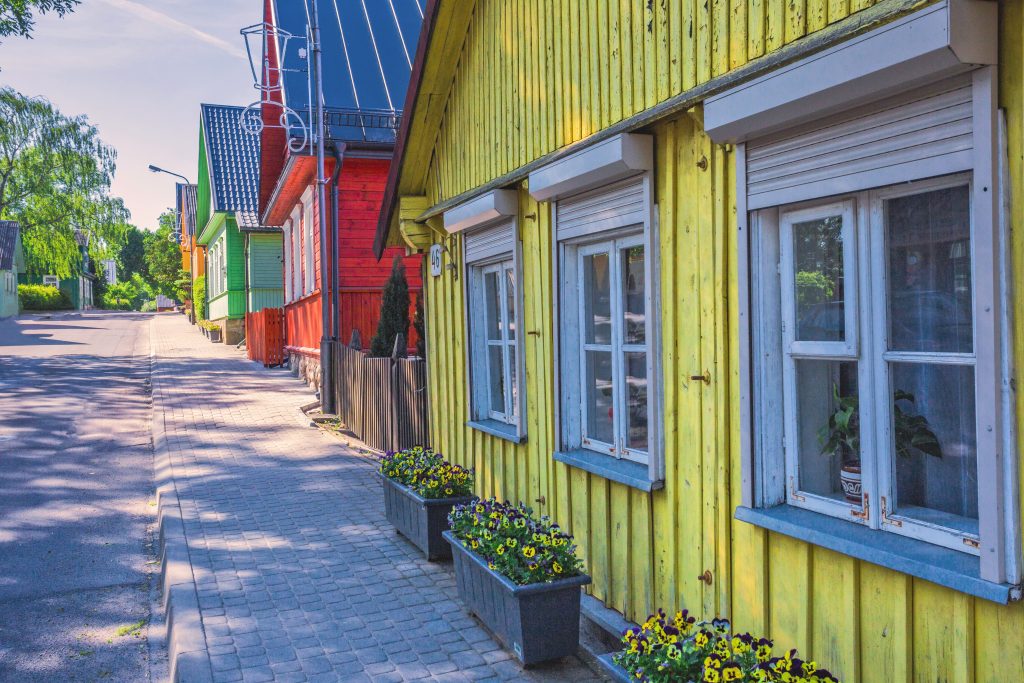
Small town
Since the Middle Ages, the Karaim Strait in the northern part of Trakai has been home to the smallest Turkic group living in Lithuania. Vytautas the Great, called Vatat Bij by the Karaim, was considered the “king who destroys enemies”. After the victorious battle in the Crimea, over 300 Karaim families moved to Trakai, where their descendants still live. Therefore, this part of the city is called the small city because it had a separate community. Karaim were the guards of the ducal manor and famous as gardeners and craftsmen
The Karaites have preserved their culture, language, traditions and national understanding for centuries. Their faith is Karaism. In Trakai there is a church of the Karaites – the Kinesa, a community hall, a madresė school, a folk museum S. Šapšal karaim. The old wooden architecture with three windows on the street remains in the town. It is said that one window is for God, the other for Vytautas (ruler) and the third for the master himself. 2022 was declared the “Year of the Karaites of Lithuania” to commemorate the 625th anniversary of the arrival of the Karaites in Lithuania.
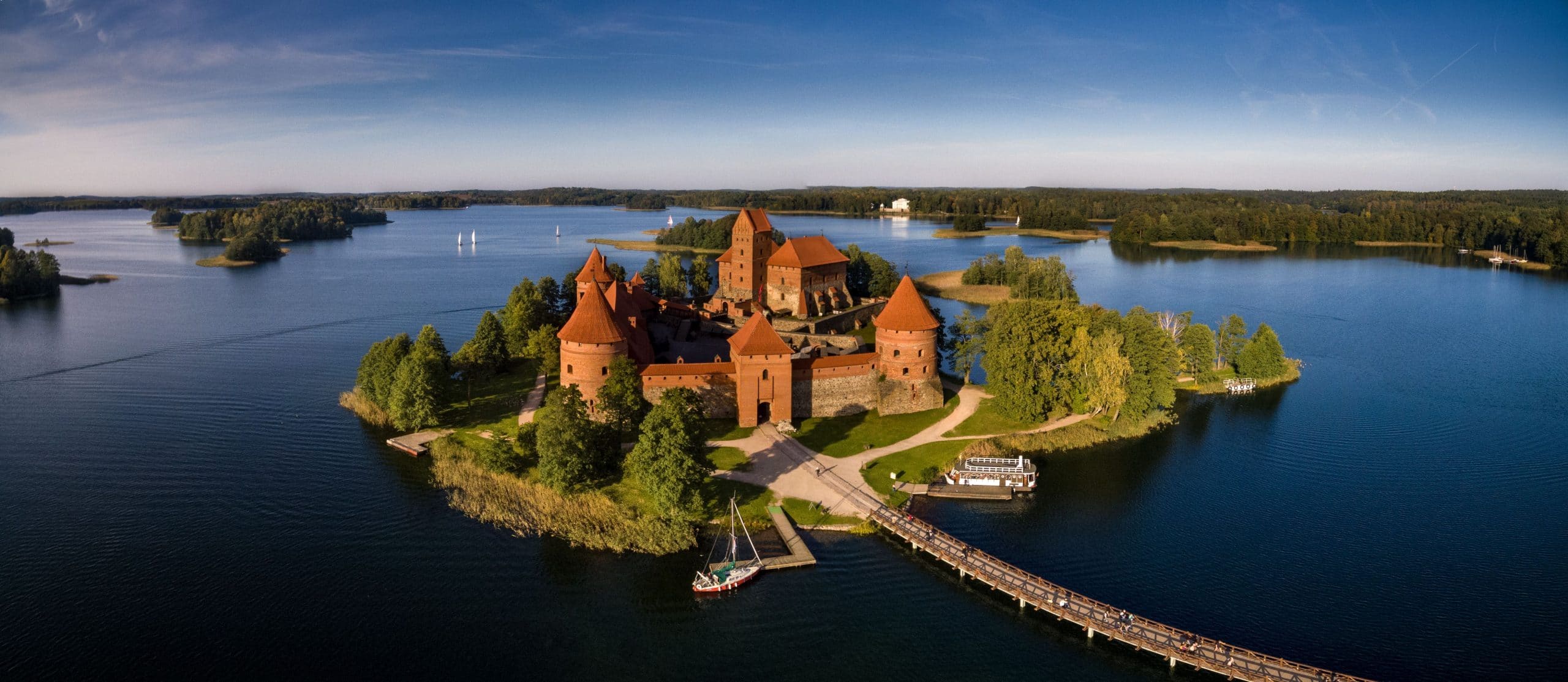
Economy and infrastructure
The municipality of Trakai, rich in cultural heritage and beautiful landscape, is also attractive for business and infrastructure development. This is due to its convenient location, 26 km from the capital Vilnius, where businesses are moving to the outskirts of the city and its surroundings. The migration of companies from the capital towards Trakai is also encouraged by well-developed roads and railway lines.
The municipality of Trakai is home to a number of successful wholesale and retail trade, logistics, manufacturing and construction companies, as well as new ones. Foreign direct investment is rising significantly as the number of economic entities increases. In terms of FDI per capita, the district municipality is in the top ten of Lithuanian municipalities. New settlements are being built in the vicinity of Trakai and the population is growing, as it is an attractive place to work and live. Trakai District Municipality ranks 5th among Lithuanian municipalities in terms of average wages.
Over the past five years, various infrastructure investment projects worth more than €50 million have been implemented. Most of these have been in Trakai and the district’s largest city, Lentvaris. One of the biggest infrastructure projects in recent years was the €22 million construction of the Lentvaris railway underground tunnel, which has significantly improved the logistics of the district and attracted new business investors.
